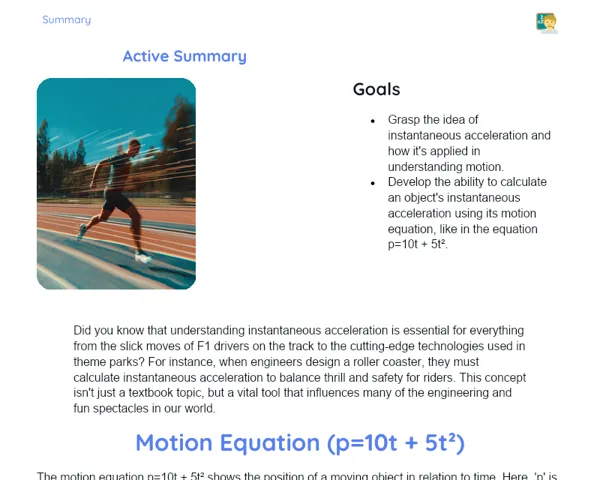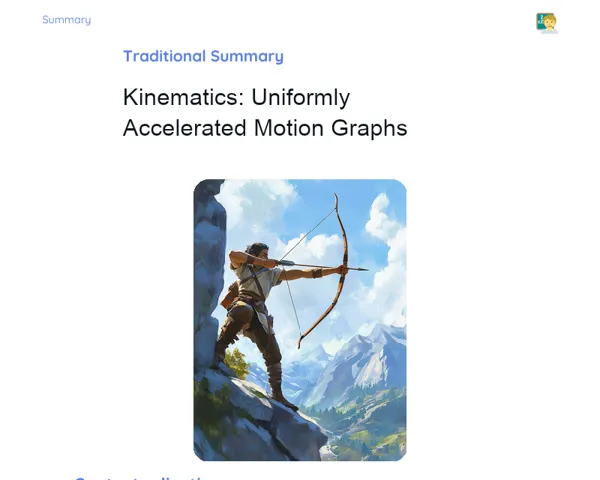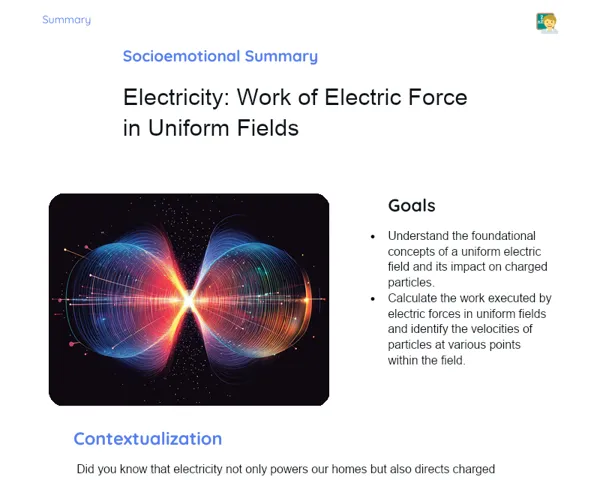Goals
1. Comprehend the definition of impulse and its connection to momentum.
2. Calculate impulse as the product of the applied force and the time of application.
3. Identify real-life situations where the concept of impulse is relevant.
Contextualization
The ideas of impulse and momentum are key concepts in Physics, especially when looking at how forces impact the movement of objects. Picture a car that brakes suddenly while speeding or a rugby player kicking a ball; both scenarios involve noticeable changes in momentum because of forces applied over a certain time frame. Grasping these concepts is not only useful for explaining everyday occurrences but is also crucial for many job sectors, like automotive engineering, professional sports, and even the aerospace field.
Subject Relevance
To Remember!
Definition of Impulse
Impulse is defined as the product of the force acting on an object and the time the force is applied. In formula terms, impulse (I) can be expressed as I = F * Δt, where F stands for the applied force and Δt represents the time interval.
-
Impulse is the product of force and the duration of application.
-
It can be expressed as I = F * Δt.
-
Impulse is a vector quantity, indicating it has both magnitude and direction.
Relationship between Impulse and Momentum
The momentum of an object is calculated as the product of its mass and velocity. Impulse is directly related to the change in momentum of that object. Imposing a force on an object for a specific period changes its momentum; thus, impulse equates to the change in momentum.
-
Momentum is the product of an object's mass and its velocity.
-
Impulse leads to a change in momentum.
-
The change in momentum is equal to the impulse applied.
Impulse Formula
The impulse formula is I = F * Δt, where I denotes the impulse, F is the force applied, and Δt is the duration of that application. This formula is essential for determining impulse in various real-world scenarios, like collisions and force actions on objects.
-
Impulse formula: I = F * Δt.
-
Useful for calculating impulse in real situations.
-
Fundamental for grasping collisions and force applications.
Practical Applications
-
Airbag design in vehicles: Engineers apply the concept of impulse to create airbags that inflate at precise moments during a crash, lessening the impact force on passengers.
-
Sports coaching: Trainers implement the idea of impulse to improve athletes' performance by exploring how the timing of force application can enhance movement and efficiency.
-
Automotive engineering: The concept of impulse figures prominently in the development of braking systems and suspensions to enhance vehicle safety and performance.
Key Terms
-
Impulse: The product of the force applied and the duration of that application.
-
Momentum: The product of an object's mass and its velocity.
-
Force: An action that can change the state of motion or rest of an object.
-
Time Interval (Δt): The period a force is applied to an object.
Questions for Reflections
-
How can insights from the impulse concept enhance passenger safety in vehicles?
-
In what ways can we leverage the idea of impulse to boost athletes' performance across sports?
-
What implications do impulse and momentum have for the evolution of new technologies in the automotive sector?
Collision Simulation with Toy Cars
Carry out a practical simulation to witness impulse in action using toy cars and weights.
Instructions
-
Divide into groups of 4-5 learners.
-
Each group needs two toy cars, a ruler, small weights, and a measuring tape.
-
Attach a known weight to one car and push it against a stationary car.
-
Measure the distance the stationary car rolls after the collision and log the data.
-
Repeat the experiment, altering the mass on the moving car and the applied force.
-
Calculate the impulse (Impulse = Force x Time) for each case and compare results.
-
Prepare a concise 3-5 minute presentation reflecting on the findings of the experiment.



